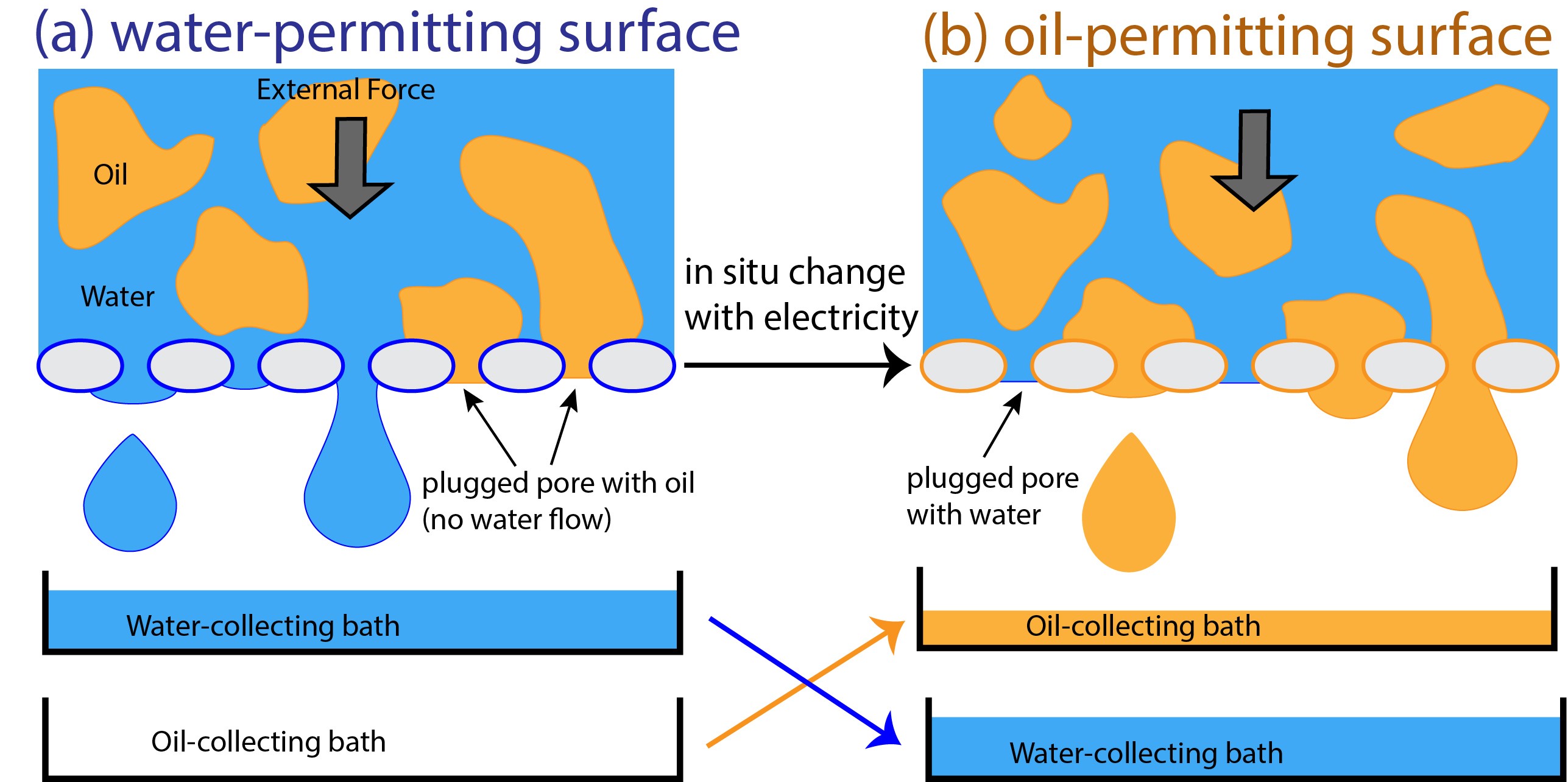(474b) Selective Flow through Membrane Pores with in Situ Change of Wettability
AIChE Annual Meeting
2020
2020 Virtual AIChE Annual Meeting
Engineering Sciences and Fundamentals
Fundamentals of Interfacial Phenomena II
Friday, November 20, 2020 - 8:15am to 8:30am
The realization of in situ wettability change can lead to the development of new kinds of membranes that can be used as selective control valves that can separate two-liquid mixture that permeate one liquid with no voltage while permeating the other liquid with voltage by adsorbing long linear molecules with dipoles on metal-coated membranes with a specific geometry. As the first step in preparing such membrane and to show the possibility of such application with the in situ change of wettability, each of four thiol molecules with long backbones was adsorbed onto flat gold and nickel surfaces. While changing the voltage across those metal surfaces were changed from 0 to 2 V, the advancing contact angles of water on those molecules were measured. The space between the long molecules were also varied by mixing those long thiol molecules with a short thiol molecule, i.e., ethanethiol, to provide more space for the long molecules to bend toward the metal surfaces, exposing the backbones to water. We found that the water contact angle increased up to 30 ° when the ratio of long molecules to the short molecule was at 1:1, providing enough difference to realize the fabrication of membrane control valve controlling the flow of water through membranes with 200-µm openings.
